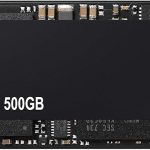Microsoft has officially acknowledged that a series of recent Windows 11 24H2 updates are precipitating widespread Blue Screen of Death (BSOD) crashes on affected machines. Beginning with the March 11 Patch Tuesday release and continuing through subsequent optional and cumulative updates, users have reported their PCs entering an unbootable state immediately after applying the patches and restarting.
The updates in question—KB5053598 (March 11), KB5053656 (March 27 preview), and KB5055523 (April 8)—carry a bug that triggers a “Secure Kernel Error” stop code (0x18B). In many cases, the system will loop on an unrecoverable crash screen, leaving users unable to access their desktops or perform routine recovery steps.
To address the problem, Microsoft has deployed a server‑side Known Issue Rollback (KIR). This mechanism quietly disables the problematic code paths on most consumer PCs without requiring any visible intervention from end users. Systems that have installed the offending updates should automatically receive the rollback patch within 24 hours, restoring normal boot behavior.
Home users eager for an immediate fix can accelerate the process by manually checking for updates and rebooting up to five times. Repeatedly invoking Windows Update in Settings prompts the KIR fix to download and install more quickly, eliminating the need for manual uninstalls or system restores.
In enterprise environments, IT administrators can push the rollback server‑side fix via Group Policy or Microsoft Endpoint Manager. For those preferring direct control, Microsoft also provides a standalone MSI package on its support site. Deploying this package across managed endpoints ensures rapid remediation and minimizes downtime for critical infrastructure.
Should the automated rollback not materialize, or if administrators wish to remove the updates outright, both the Windows Recovery Environment’s “Uninstall Updates” option and PowerShell/DISM commands in Safe Mode allow for manual removal of the problematic KB packages. This dual approach ensures that even without the KIR, systems can be restored to a functional state.
Looking ahead, Microsoft has committed to rolling out a permanent correction in an upcoming cumulative update. In the interim, users and IT professionals alike are advised to back up critical data, stagger the deployment of major patches across multiple machines, and monitor Microsoft’s official Known Issues documentation for the latest guidance.
As Windows continues to evolve, this episode underscores the importance of comprehensive patch testing and robust rollback strategies. By combining automated server‑side fixes with clear manual remediation paths, Microsoft aims to balance swift recovery with minimal disruption for both home and enterprise customers.



